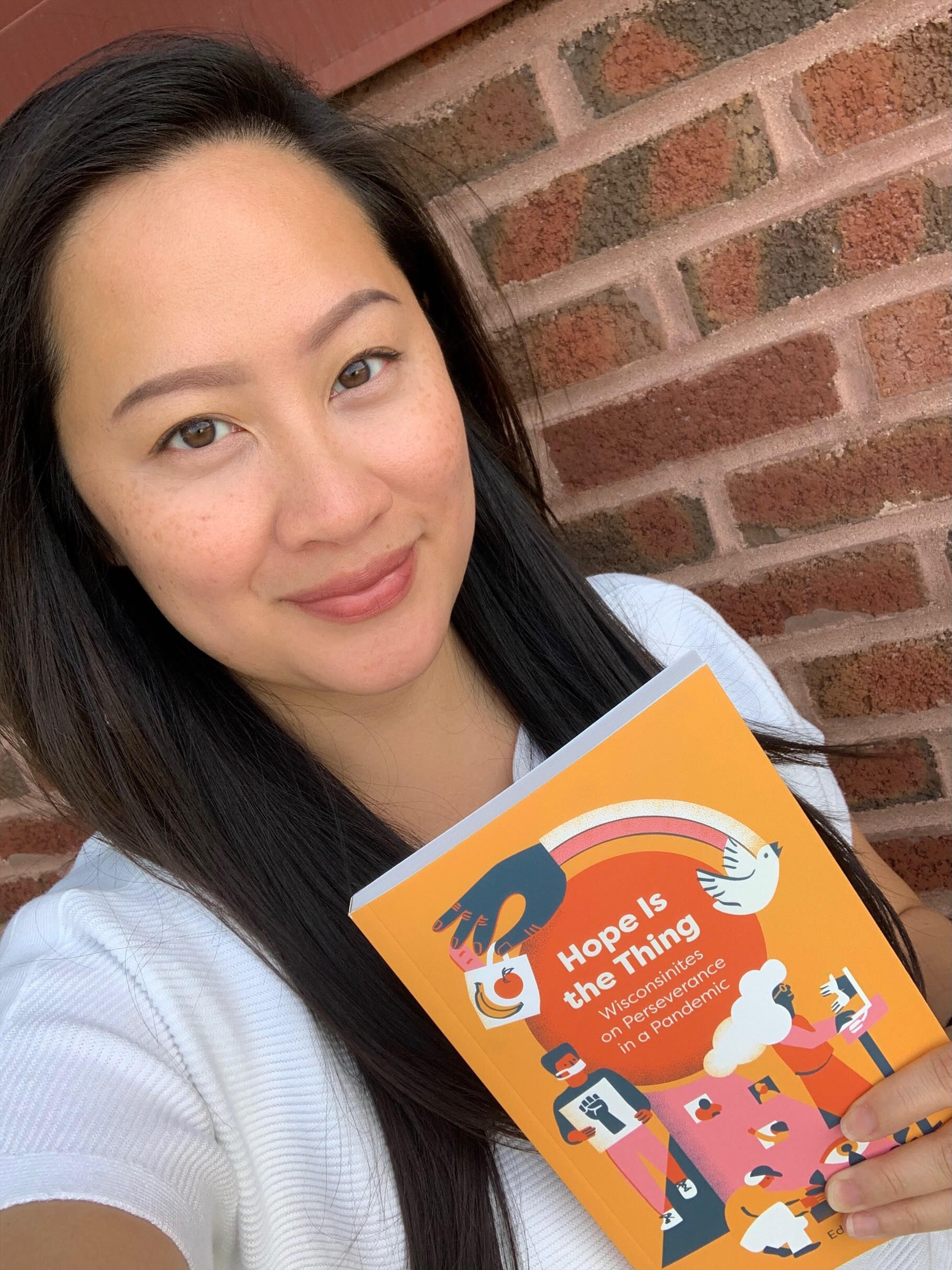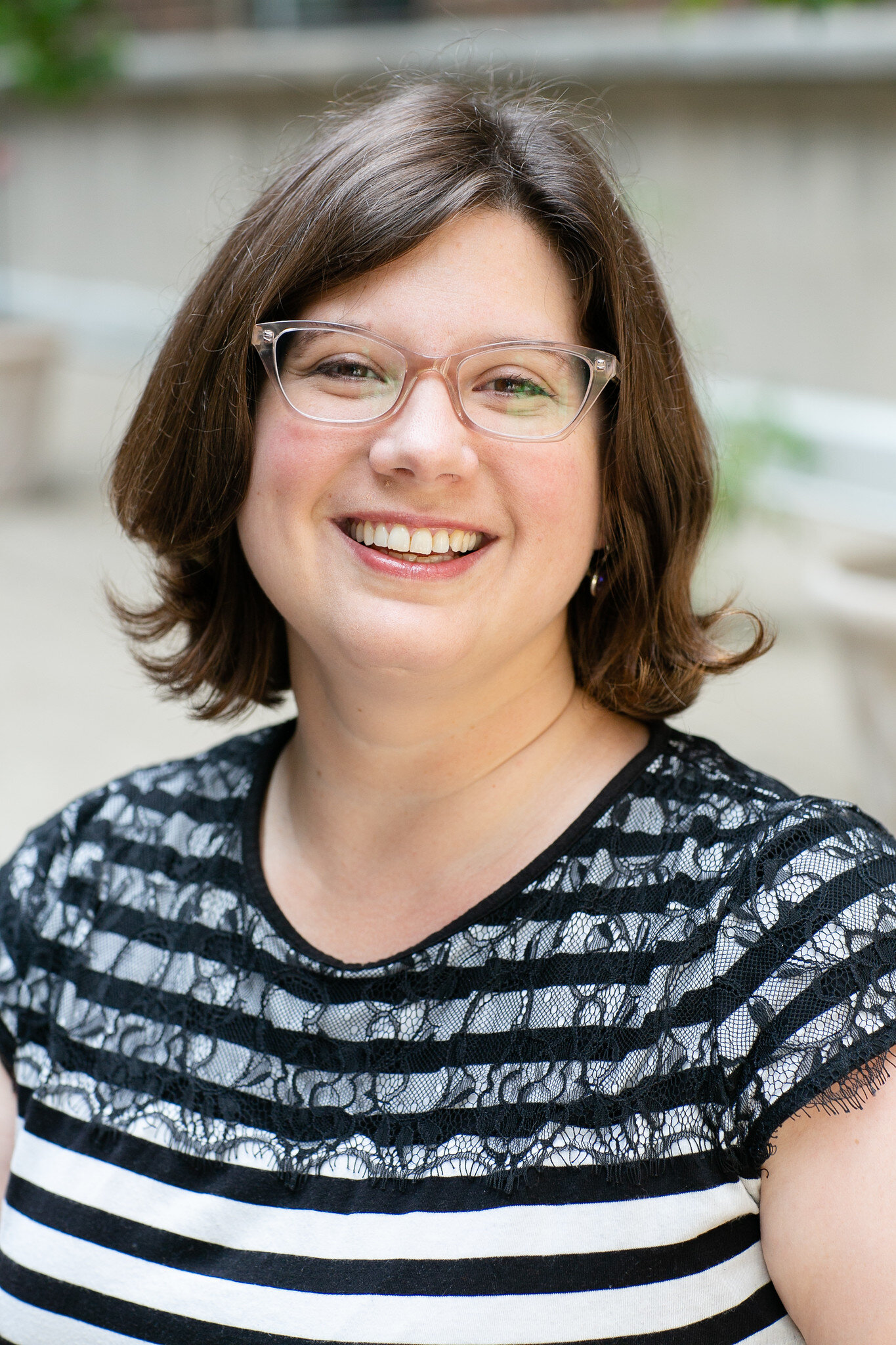Aja St. Germaine
Angela (Angie) Trudell Vasquez is a life-long writer, speaker, and advocate. She is the current City of Madison Poet Laureate and received an MFA in poetry from the Institute of American Indian Arts in Santa Fe, New Mexico. Her poems have been featured in many publications, including the Yellow Medicine Review, the Raven Chronicles, My People Redux, and the Poetry Foundation. She is the first Latina Poet Laureate of Madison, Wisconsin.
This summer, Angie will serve as a writer-in-residence at The Priory Writers’ Retreat. Sign-ups begin January 1. Click here to learn more about how to attend, and how to schedule your one-on-one conference with Angie.
As someone who is a believer in self-advocacy as a form of social justice, I wanted to hear from a true activist, writer, and social justice advocate about the ways she both cares for and honors herself. This weekend I had the honor of interviewing Vasquez, who made time to chat with me between attending and accepting at award ceremonies. Being Madison’s first Latinx Poet Laureate leaves little room for rest. Vasquez is a woman who believes that if there is generational trauma, there must be generational joy, and she dominates her field both in writing pedagogy and activism.
Aja St. Germaine: As a Latinx writer, the space you take up in a lot of writing spaces is inciting a much-needed change in the racial and cultural dynamic in writing pedagogy, particularly in Wisconsin. How do you see your advocacy translate through your writing?
“I think it is important to be authentic to yourself and your work and not to live up to any one’s expectation but yourself. ”
Angie Trudell Vasquez: I am the same person all the time. What I care about, my concerns, what and who I love comes out in my work. I think it is important to be authentic to yourself and your work and not to live up to any one’s expectation but yourself. I look back at my early work, what I wrote, what I saw, what I witnessed in the world around me locally, globally, and personally; and these themes still resonate with the person I am now, not how I wrote them, my craft has evolved and so have I, but what I care about is reflected in my poems. A mentor once said we do not write in a vacuum, and I agree. I have many influences as a poet at this point in my life. I write about everything and do not limit myself to one topic or form or style. I feel free when I write and when I edit. I am a very political person. We discussed it as a family and debated and talked about history, family history, and current events. I think I was a feminist from birth and have never felt less than anyone else regarding gender or ethnicity or class or physical stature. This can be seen in the progression of certain identity poems I wrote through my 20s, 30s, 40s and now 50s. Growing up where I did, I defined myself on the page and decided early to master the English language. I have anti-war poems, peace poems, poems for immigrants and migrants and those displaced, nature poems, environmental poems, poems for celebrations and poems for death and remembrance, poems for all the people I love and absolute strangers I see in airports and train stations and busses and fairs, I have poems of place and poems for children, poems for laborers, animals, trees, flowers, tortillas, fruit and vegetables, I even have poems for bankers… (my first real job).
“My advocacy is to be myself and to be original in my own work and continue to have discovery on the page. I want to be surprised when I write, and my pen is usually ahead of my conscious self. A poet friend said she is writing the best poems of her life in her 70s that is an exciting thought to me. ”
My advocacy is to be myself and to be original in my own work and continue to have discovery on the page. I want to be surprised when I write, and my pen is usually ahead of my conscious self. A poet friend said she is writing the best poems of her life in her 70s that is an exciting thought to me.
I am an activist all the time and this shows up in my poems, essays, and the projects I take on as an editor and a publisher. I have my own press Art Night Books which has a social justice function. My early poems were published by Real Change in Seattle, Washington, and an immigrants’ rights organization there called Casa Latina where I volunteered teaching English. I have a new poem coming out and it is about one of my first memories picketing for workers’ rights with my sister. My family arrived in the late 1800s in the Midwest. I am 2nd and 3rd generation. I write about what I care about, what moves me, and if it moves someone else all the better. I write to connect. Poetry can do so much work. You can time travel in poems. All art can have a higher function. Poetry is one of the tools of humanity, and I do not think it should be limited to one definition or role much like humans.
AS: How do you practice self-preservation as a woman of color writer in a predominately white state and writing culture?
ATV: I go where I want primarily, I have every right to be at a literary conference or poetry reading. Do not ask permission just do your art and work on your craft and take it out to read at open mics, submit to journals where your work would be welcome, do your research before you show up and amaze people with your poems or essays or short stories or creative non-fiction. Write the stories you don’t see. Find your literary community and share resources. I have lists I give out when I do poetry workshops for young writers. I was the young woman in my 20s readings poems in my university on domestic violence and women’s reproductive rights no matter the audience. These were my concerns at the time and people were receptive. I grew up in Iowa and it was 99% white, and very much understand living in rural and urban communities in the Midwest. I feel like I have had two feet planted in both communities my entire life. I did choose to get my MFA at the Institute of American Indian Arts (IAIA.edu) because I read about other writers of color and their experience in MFA programs and chose to go to IAIA.edu because I just wanted to focus on my work, work with world class writers and it was the BEST experience for me. I so loved going back in my late 40s and being fully dedicated to my art while there. It felt like home.
There are so many writers doing good work right now, people I know and went to school with, writers all throughout Wisconsin and the U.S. who are having great success. It is out time to tell our stories. I feel supported by my writing community. I have helped shaped this community too. I serve as the Chair for the Wisconsin Poet Laureate Commission. I was a board member for Woodland Pattern Book Center while I lived in Milwaukee. I am active in the Madison community teaching other’s poems and my own, spreading the love of poetry and judging poetry contests.
The poetry world is rich and historic. Poets of all ethnicities and races have written poems and we have always existed on Turtle Island or North America. My specialty is Indigenous Poetics. I taught a workshop in 2021 solely on Native poets in Wisconsin. I could do the same with Latinx writers in Wisconsin. We have all these literary ancestors, and they paved the way for us and we have their writings to learn about their experience.
Self-care is nature for me, and I dance and walk and do yoga. If we have generational trauma, we also have generational joy, and I am more interested in the joy part now. I choose to spend my precious life on writing what I want to write about and am having a good time publishing poems and collections and have several projects going on right now. I do mentor some people now and then. I want to share what I have learned with other writers. This is how I can pay back. I have not arrived here at this level on my own. Many people have helped me along the way. Through publishing I am able to contribute by making space for others’ voices and promoting their work.
AS: What advice do you have for young BIPOC writers that are just starting out?
ATV: I have so much advice for poets but will limit generally to writers:
1. Read, read widely whatever you want it all feeds your writing. Good art inspires more art. Go to museums and art galleries for inspiration and history. Listen to music, live and recorded.
2. Go to open mics to test out your work and listen to others, poems and stories sound differently when you read them to people aloud, very different than in your home when you are alone. I edit all my work aloud.
3. Edit your work on the page, read it aloud, number your drafts, put it away and come back to it later. Tape it to your wall with painter’s tape like I do when I am editing a piece and am not sure about something. I put my books on my walls when I am in the editing process, and it helps me greatly.
4. Be an active literary citizen. Go to events, see writers in person or virtually, check out the listings in your area. Talk to other writers. Support each other’s successes and only compete with yourself.
5. Submit when you feel you are ready and do your research make sure it is a good fit.
6. Keep your work organized and know where and when you submitted.
7. Keep writing. I also journal in addition to writing poetry. I have done automatic writing since I was a child. Whatever works for you do but I like writing poetry or anything creative first in long hand. The body connection is important to me. I do practice “first thought, best thought” often and harvest my free writes for poems.
On January 1, apply to The Priory Writers Retreat where you can work with Angie!































































